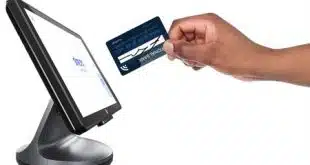Has the explosion in consumer usage of signature-based debit cards created a bonanza for banks in fees charged for insufficient funds? At least one analyst thinks so. “It's the dirty little secret in the industry,” says Steve Mott, a former MasterCard executive and principal at BetterBuyDesign, a Stamford, Conn., consultancy. Mott figures banks issuing the cards are deriving anywhere from 30% to 50% of their total signature-debit revenue from NSF fees, which average $26.90 per incident, making signature-debit portfolios even more profitable for issuers than many may think. The range for banks Mott has dealt with runs even higher, from 40% to 60% of total revenue, he says. If he's right, banks could potentially make between $2.7 billion and $6.2 billion annually in NSF fees on signature-debit cards, Digital Transactions News estimates. The estimate assumes 13 billion point-of-sale transactions annually, with an average ticket of $40 and a 1.2% interchange rate. The estimate further assumes no other revenue than interchange and NSF charges. The opportunity for insufficient-funds cases to develop stems from the fact that, unlike PIN debit cards, which typically settle on the same day as the transaction, signature-debit payments settle over a range of days, as does a check. Indeed, only 20% of signature-debit payments settle within one day, with 97% settling within three days, according to UBS Securities LLC. While issuers can place holds on funds over the settlement period, Mott says banks often choose not to. “Once they get the revenue from NSF fees, they don't have the incentive to,” he adds. The number of issuers aggressively pursuing NSF revenue on their cards is hard to pin down, but Mott estimates it's at least 50%. “And the number is actually increasing as the word is getting out,” he says. The revenue potential from NSF fees has come about in large part because signature-debit transactions have been growing at 20%-plus annual rates, a rate of growth far exceeding credit card payments and on a par with PIN debit transaction growth. It could also play a role in the calculations of banks looking at the relative profitability of PIN and signature debit. Such analyses usually focus just on interchange revenue, which is significantly higher for signature-debit payments, though signature debit carries higher operational costs. A recent study by First Data Corp. indicated signature-debit transactions are almost twice as expensive for banks to process than PIN debit payments?22 cents per transaction compared to 11.6 cents, taking into account back-office fraud management, chargebacks, settlement, customer service, and accounting functions (Digital Transactions News, Nov. 16). The same study found fraud losses run four times higher on signature debit than on PIN.
Check Also
Eye on Point of Sale: Elo’s New Display; FreedomPay’s Verifone Partnership; Blaze’s Sage Integration
Point-of-sale systems makers are already putting 2025 to work, with multiple announcements from vendors. First, …





